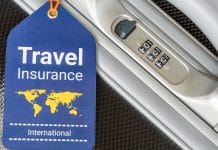Starting a business is exciting, but let’s be real—without solid credit, you’re basically trying to drive a Ferrari with bicycle wheels. If you’re wondering how to start business credit with EIN, you’ve landed in the right place.
Think of your EIN as your business’s social security number. Just like you needed that nine-digit number to get your first credit card in college, your business needs its own identification to start building credit. The difference? Business credit can open doors to funding opportunities that make your personal credit limit look like pocket change.
What Exactly Is an EIN and Why Do You Need It?
An EIN (Employer Identification Number) is a unique 9-digit number issued by the IRS to identify your business for tax and legal purposes. It’s the foundation of your business credit journey—without it, you’re essentially invisible to lenders and vendors.
Here’s the thing: you can’t build legitimate business credit without an EIN. It’s like trying to get into an exclusive club without ID. Banks, vendors, and credit bureaus need this number to verify your business exists and track your credit activity separately from your personal finances.
Why Separation Matters
Remember when you were 18 and your parents warned you about mixing finances? The same principle applies here but with higher stakes. Business credit separation protects your personal credit score from business hiccups and gives you access to higher credit limits.
The Step-by-Step Blueprint to Start Business Credit with EIN
Step 1: Form Your Business Entity
Before you can get an EIN, you need a legitimate business structure. Here are your main options:
LLC (Limited Liability Company)
- The simplest structure for most small businesses
- Protects personal assets
- Flexible tax options
Corporation
- More formal structure
- Required for certain industries
- Better for attracting investors
Sole Proprietorship
- Easiest to set up
- Less credible to lenders (honestly, they might not take you seriously)
Business Structure | Credibility | Setup Complexity | Asset Protection |
LLC | High | Medium | Excellent |
Corporation | Highest | High | Excellent |
Sole Proprietorship | Low | Low | None |
Step 2: Get Your EIN from the IRS
Getting an EIN is surprisingly straightforward and completely free when you go directly through the IRS website. Avoid those sketchy websites charging $200+ for something the government provides for free.
Pro tip: Apply online at irs.gov. You’ll get your EIN immediately, and it won’t cost you a dime.
Step 3: Open a Business Bank Account
This is where your EIN starts working for you. Walk into your bank (or apply online) with these documents:
- Your EIN confirmation letter
- Business formation documents
- Business license (if required in your area)
- Personal identification
Choose a bank that offers business credit cards and lending services—you’ll want to build a relationship with them.
Step 4: Get Your D-U-N-S Number
A D-U-N-S Number is like a credit report starter pack for your business. Dun & Bradstreet issues these free numbers, and many vendors require them before extending credit.
Visit dnb.com and apply for your free D-U-N-S number. It typically takes 5-7 business days to process.
Step 5: Start with Net-30 Vendor Accounts
Net-30 accounts are your training wheels for business credit. These vendors let you buy now and pay in 30 days—perfect for building payment history.
Top Net-30 Vendors That Report to Credit Bureaus:
- Uline – Office and shipping supplies
- Grainger – Industrial supplies
- Quill – Office Supplies
- Crown Office Supplies – Business essentials
- Reliable Office Supplies – Stationery and equipment
Start small with these accounts. Order something you actually need, then pay it off early or on time. This creates a positive payment history that gets reported to business credit bureaus.
Step 6: Apply for Your First Business Credit Card
Once you have 3-6 months of vendor payment history, it’s time for a business credit card. Start with your business bank—they already know you and your account history.
Important: Look for cards that report to business credit bureaus, not just personal ones. Some business cards only report to personal credit, which defeats the purpose.
Step 7: Monitor and Build Your Credit Profile
Business credit bureaus work differently than personal credit. Here are the big three:
Dun & Bradstreet
- Uses a 1-100 scoring system
- Heavily weighs payment history
- Most widely used by vendors
Experian Business
- Uses a 1-100 system similar to personal credit
- Focuses on credit utilization and payment patterns
- Growing influence in lending decisions
Equifax Business
- Newer player in business credit
- Often used for background checks
- Important for larger credit applications
How Long Does It Take to Establish Business Credit?
Let’s set realistic expectations here. You’re looking at 3-6 months minimum to establish initial trade lines and credit history. However, building substantial business credit that impresses lenders takes 12-18 months of consistent activity.
Think of it like working out—you won’t see abs after a week, but consistent effort pays off over time.
Common Mistakes That Kill Business Credit Dreams
Mixing Personal and Business Expenses Using your business credit card for personal purchases is like wearing flip-flops to a job interview. It works, but it sends the wrong message and can complicate your finances.
Ignoring Credit Utilization Keep your credit utilization below 30%, just like with personal credit. If you have a $10,000 limit, don’t max it out. Lenders see high utilization as desperation, not success.
Not Paying Attention to Reporting Some vendors and credit cards don’t report to business credit bureaus. Before signing up, ask: “Do you report positive payment history to Dun & Bradstreet, Experian Business, and Equifax Business?”
The Benefits of Strong Business Credit
Higher Funding Limits Business credit lines can reach six or seven figures. Personal credit cards? You’re lucky to get $50,000 without jumping through hoops.
Better Vendor Terms Strong business credit gets you better payment terms, bulk discounts, and higher credit limits with suppliers. This improves cash flow and reduces costs.
Professional Credibility When potential partners or customers check your business credit, a strong score signals stability and reliability.
Lower Insurance Rates Many business insurance companies check credit scores when setting rates. Better credit can mean lower premiums.
Advanced Strategies for Faster Results
The Authorized User Hack If you have strong personal credit, some business credit cards allow you to add your business as an authorized user on personal cards. This can jumpstart your business credit file.
Trade References Matter Always pay vendors early or on time, then ask them to serve as trade references for future credit applications. A good word from existing creditors carries serious weight.
Professional Address Get a professional business address (not your home). Lenders and vendors take businesses with commercial addresses more seriously. A PO Box works, but a street address is better.
Special Considerations for Different Business Types
E-commerce Businesses Focus on vendors like shipping companies, packaging suppliers, and payment processors that report to credit bureaus. Your business model actually makes it easier to build trade credit.
Service-Based Businesses You might think you’re at a disadvantage, but service businesses can still build credit through office suppliers, software subscriptions, and professional services that offer Net-30 terms.
Home-Based Businesses Don’t let working from home hold you back. Many successful businesses started in garages and spare bedrooms. Focus on professional presentation and consistent payment history.
When to Consider Professional Help
If navigating business credit feels overwhelming, financial advisors who specialize in small business credit can provide personalized guidance. They understand the nuances of business credit and can help you avoid costly mistakes.
Similarly, if you’re dealing with personal debt while trying to build business credit, consider exploring debt consolidation options to improve your overall financial picture.
Protecting Your Personal Credit During the Process
Building business credit shouldn’t damage your personal credit. Here’s how to protect yourself:
Avoid Personal Guarantees When Possible Some lenders require personal guarantees, especially for new businesses. This makes you personally liable if the business can’t pay. Only agree to this if absolutely necessary.
Keep Business and Personal Finances Separate Never use personal funds to pay business credit cards or vice versa. This separation is crucial for maintaining the legal distinction between you and your business.
Monitor Both Credit Reports Keep an eye on both your personal and business credit reports. Free credit counseling services can help you understand what lenders see when they pull your reports.
Real-World Timeline: What to Expect
Month 1-2: Form a business entity, get EIN, open a business bank account
Month 3-4: Apply for D-U-N-S number, start first Net-30 accounts
Month 5-6: Add more vendor accounts, apply for first business credit card
Month 7-12: Build consistent payment history, increase credit limits
Month 12+: Apply for larger credit facilities, business loans, or lines of credit
Tax Implications You Should Know
Using your EIN for business credit has tax implications. Business expenses paid with business credit are typically deductible, but personal expenses aren’t. Keep meticulous records and consider consulting a tax professional.
If you’re self-employed, check out these self-employed tax tips to maximize your deductions while building business credit.
The Bottom Line: Your Business Credit Journey Starts Now
Building business credit with your EIN isn’t rocket science, but it does require patience and consistency. Start with the basics: form your business entity, get your EIN, open a business bank account, and begin building relationships with vendors who report to credit bureaus.
Remember, every successful business owner started exactly where you are right now. The difference between those who succeed and those who don’t? The successful ones take action instead of just thinking about it.
Your business credit journey starts with that first step. Whether you’re planning to scale your existing business or start fresh, strong business credit gives you options that personal credit simply can’t match.
Ready to take action? Start by visiting the IRS website to get your EIN today. Then come back and work through each step systematically. Your future self—the one with access to serious business funding—will thank you.
Don’t let another month pass wondering “What if.” Your business credit-building journey starts now, and every day you wait is a day of potential credit history you’re losing.
If you need additional guidance on managing your overall financial strategy while building business credit, explore more resources about emergency fund strategies and budgeting tips to ensure your business has a solid financial foundation.
For more comprehensive financial guidance and business resources, visit https://wealthopedia.com/

























